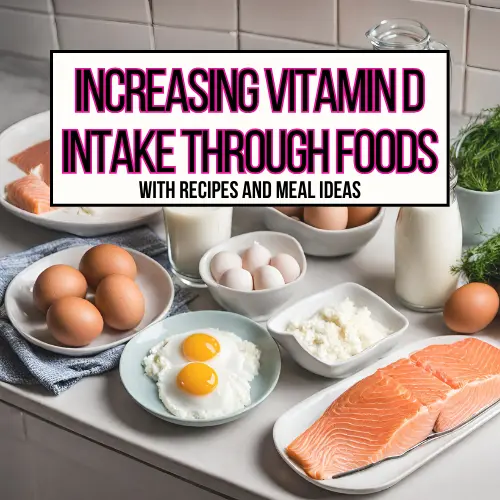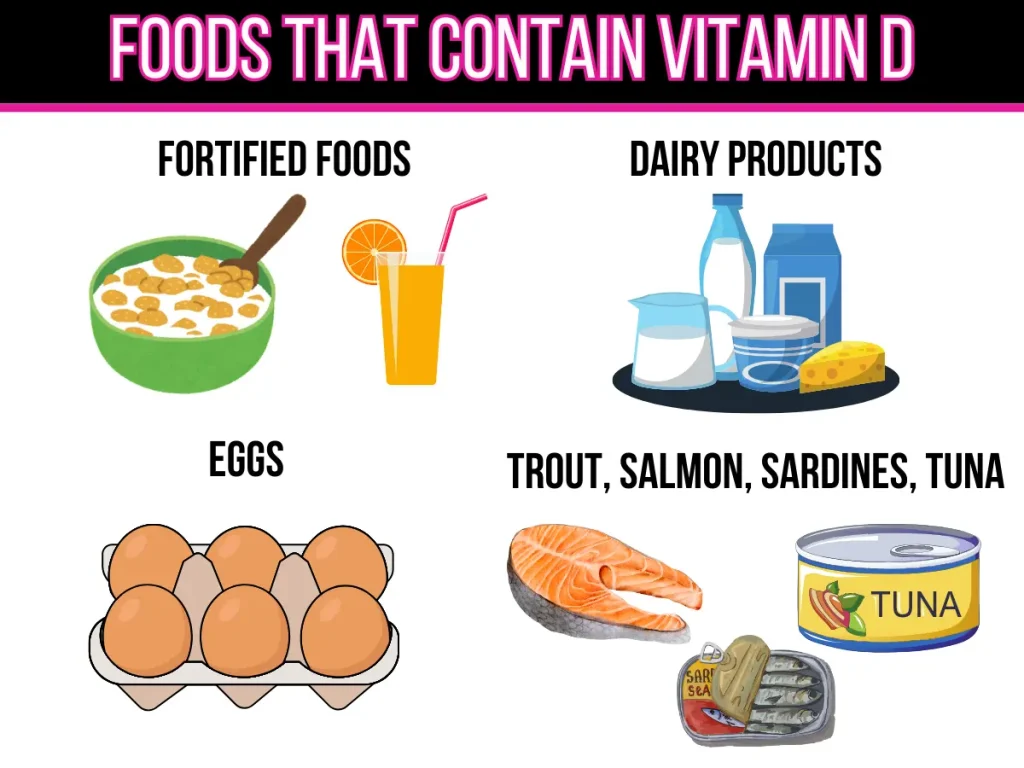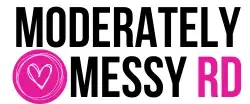Maybe you’ve been there – those dreaded winter months where you barely see the sun. I live in Michigan, so I understand this as much as anyone can. You might be feeling down not only from the lack of activity, but also a lack of vitamin D – which has been linked to depression and anxiety.
Research on vitamin D has increased over the years because it’s well known that we just aren’t getting enough of it – especially from foods!

There is now an abundance of evidence that vitamin D deficiency can negatively impact our mood, human skeletal system, and even the progression of certain diseases.
This post is all about the importance of vitamin D! Let’s explore the (very few) vitamin D rich foods from our diet with recipe ideas on how to incorporate them.
What is Vitamin D?
Vitamin D is a fat soluble vitamin, meaning we need fat to absorb it in the small intestine. Almost every tissue in the body expresses vitamin D – and it is especially important for bone health. This is because its’ primary function is to assist with the absorption of calcium.
80% of our vitamin D is synthesized in the skin through ultra-violet rays. Just 15-20 minutes, twice a week is enough to meet the recommended intake (which is about 600 international units per day).
The amount of vitamin D we make from the sun can be affected by skin pigmentation, sunscreen use, age, where you’re located and even body fat percentage.
What we consume from our food is only 1/5th of the average person’s vitamin D intake!
Types of Vitamin D
Ergocalciferol (vitamin D2) is usually the form we consume from foods, whereas cholecalciferol (vitamin D3) is synthesized in the skin (D3) from ultraviolet light. They are then converted into 25-hydroxy-vitamin D2 (25-OH-D2) and 25-hydroxy-vitamin D3 (25-OH-D3), respectively.
It is then converted to its’ active form, 1,25-dihydroxyvitamin D.
All the Benefits of VItamin D
I will try not to bore you with all of the benefits of vitamin D, so here is a brief overview of just some of the reasons vitamin D is so important for our health.
Calcium and Phosphorus Absorption
Optimal levels of vitamin D are essential for calcium and phosphorus absorption.
Therefore, if you’re deficient in vitamin D, you may also have difficulty absorbing calcium. This can lead to increased weakness, fatigue, bone loss, osteoporosis and osteomalacia.
Depression and Anxiety
Multiple studies have found that there is a link between low vitamin D levels and increased symptoms of depression and anxiety.
A 4-year long study determined that individuals with vitamin D deficiency were 75% more likely to develop depression as compared to individuals with adequate levels!
That is definitely something to think about for us moms!
Immune Response
A deficiency in vitamin D can increase susceptibility to infection and various immune-related diseases.
Adequate vitamin D levels may also reduce inflammation!
Cancers and Chronic Diseases
While more research is needed, many studies are showing an association between vitamin D deficiency and cancer, cardiovascular disease, diabetes, and autoimmune diseases.
Lower vitamin D levels have been associated with an increased risk for certain types of cancer and a decreased survival rate likely due to the vitamin’s anti-inflammatory properties.
This has become a hot topic recently and needs to be further explored and studied.
What Causes Vitamin D Deficiency?
Wouldn’t it be so nice if checking one’s vitamin D levels became routine? Unfortunately, it is not that simple to test for vitamin D deficiency. There is actually controversy on what is considered an optimal level of vitamin D in the body.
Most providers don’t test for vitamin D deficiency unless there is an increased risk due to underlying factors (see below).
The causes of vitamin D deficiency range from lack of sun exposure, decreased endogenous synthesis due to liver or kidney function, malabsorption (from celiac disease or IBD), and the use of certain medications.
And of course, the lack of vitamin D rich foods in the diet!

Vitamin D Rich Foods
The recommendations for daily vitamin D intake varies depending on age, access to sun exposure, and certain medical conditions.
For most adults less than 65 years of age, 600-800 international units (IU) or 15 micrograms of vitamin D per day is ideal.
The reason only 1/5th of our vitamin D comes from food? There are very few natural food sources that contain vitamin D! However, the current guidelines suggest that most of our vitamin D intake should be through foods.

The above table gives you an idea of how much vitamin D is in certain foods.
Oily fish, like salmon and trout, are some of the best sources of vitamin D in our diet. Some foods, such as dairy products and cereal, have been fortified with vitamin D to help fill in the gaps in our diet. The vitamin D from eggs is in the yolk – so don’t skip it!
Recipe Ideas for Vitamin D Rich Foods
Now that you understand the importance of consuming a diet rich in vitamin D, here are some recipe ideas!
Salmon

Salmon is typically quick and simple to make – and it’s one of the best (and only) sources of omega-3 fatty acids! Of course, any of these recipes could be substituted with trout or mackerel.
— Oven Baked Salmon (Creme de la Crumb): A super simple salmon recipe baked in the oven and flavored with lemon and garlic.
— Honey Garlic Butter Baked Salmon (Kitchen Sanctuary): A delicious honey garlic butter is drizzle over the salmon filets for an explosion of flavor.
Also read: 30+ Salmon Recipes High in Omega-3 Fatty Acids.
Trout
— Trout with Garlic Lemon Butter (Julia’s Album): 30-minutes and this healthy fish dinner is on the table.
— Brown Butter Almond Trout Recipe (Lakeside Table): I mean, the title says it all. The fish is topped with almonds that are cooked in brown butter for a rich and nutty flavor.
— Trout Almondine (Beyond the Chicken Coop): The trout is pan-fried with a lemon butter and topped with sliced almonds.
Tuna
— Easy Tuna Casserole (Spend with Pennies): A highly-rated casserole recipe combining egg noodles, peas, celery and mushroom soup for an easy, throw together meal.
— Tuna Melt Sandwich (Iowa Girl Eats): A crispy grilled sandwich filled with vitamin D rich tuna and cheddar cheese.
— Healthy Tuna Salad (Feel Good Foodie): A no mayo tuna salad that can be served with crackers, lettuce wraps or on a sandwich.
— Tuna Pot Pie (All Recipes): A new take on a classic comfort recipe. The tuna replaces the chicken – and you might not even be able to taste it.
Eggs

— High Protein Breakfast Burrito: These easy, delicious breakfast burritos are filled with eggs and cheese, then topped with Greek yogurt to provide 18% of our daily value of vitamin D.
— Savory Quinoa Breakfast Bake: Another filling breakfast option with eggs and cottage cheese, packed with protein and fiber, too!
— Scrambled Eggs with Smoked Salmon (Food Network): This recipe combines TWO vitamin D rich foods: scrambled eggs and salmon. The ultimate breakfast to boost your vitamin D intake!
Fortified Milk
— Strawberry Banana Smoothie (Love and Lemons): A simple smoothie recipe can make an easy breakfast or snack. Most milk is fortified with some vitamin D – read the label of your preferred milk just to be sure.
— Homemade Creamy Vegetable Soup (My Food Story): A creamy, veggie-packed soup without cream – just milk. Any milk-based soup recipe can be a comforting way to increase your vitamin D intake.
— High Protein Overnight Oats (Haute and Healthy Living): Each serving of overnight oats contains a cup of milk. Plus, they’re simple to prep and make a delicious and healthy grab-and-go breakfast.
Fortified Cereals and Bars
A bowl of cereal and milk is an excellent way to consume two vitamin D rich foods. Yes, cereal can contain a lot of added sugar. However, there are many brands which are high in fiber and even protein.
Check out this infographic with high fiber breakfast cereals!

I searched the internet high and low for cereal bars fortified with vitamin D. One of the only ones I found is this Toasted Rice Krispies Cereal Bar.
Related Posts:
— The Best Oreo Protein Shake (made with milk)
— High Protein and Fiber Meal Plans
Should I take a Vitamin D Supplement?
Oh, to take a vitamin D supplement. As you can see, it might be difficult to meet your vitamin D intake through foods alone. You would have to eat a lot of salmon, milk, eggs and cereal.
The short answer? Yes, but it’s complicated.
It’s a tricky question to answer, as different organizations around the world have varying guidelines on which supplement to take and how much. The NHS recommends taking a vitamin D supplement of 10 micrograms per day, or 400 IU – consumed with a snack or meal for optimal absorption.
Some multivitamins have about 10 mcg of vitamin D – which is ideal with the help of foods high in vitamin D.
What the Research Says About Vitamin D Supplementation
There are clinical trials that suggest that taking vitamin D supplements do not prevent or ease symptoms of depression. Then, there is also research that supports supplementation.
A recent review of human studies stated vitamin D supplementation had no effects on incidence of cancer, type 2 diabetes, bone density and risk of falls.
Even further, the optimal levels of serum 25-hydroxyvitamin D are still controversial, with many factors to consider – such as a person’s race.
Vitamin D is not one of those vitamins that you just pee out when you consume too much- so there is potential risk for toxicity.
Additional Thoughts
The good news is that with all of the potential benefits of vitamin D, and an increase in vitamin D deficiency in Americans, more research is emerging. Hopefully, in the next few years, there will be more guidelines on how to go about increasing vitamin D status – whether through foods or supplementation.
Not only that, but more routine testing of vitamin D status for individuals.
Until then, try to be more mindful of these vitamin D rich foods and how you can incorporate them into your diet – especially during those sunless winter days.
